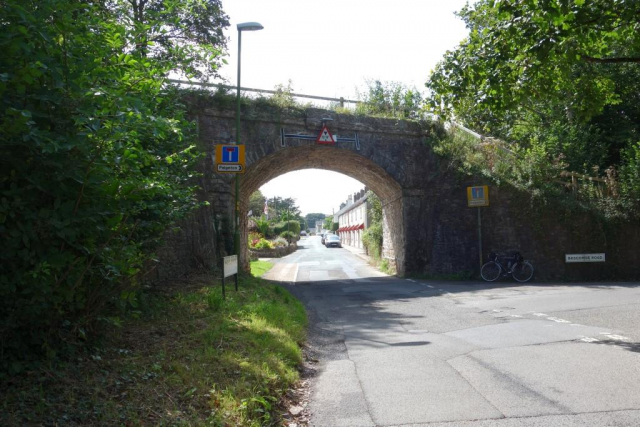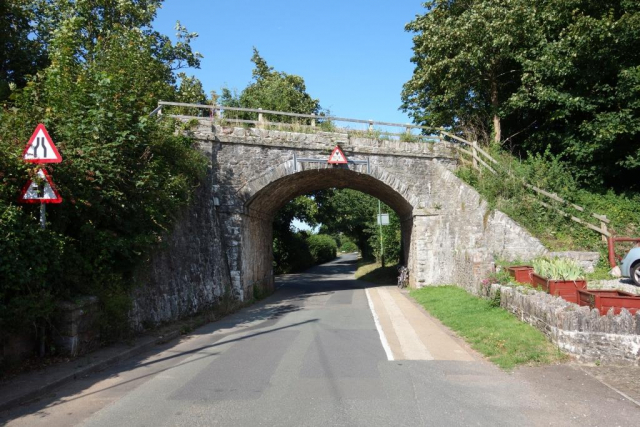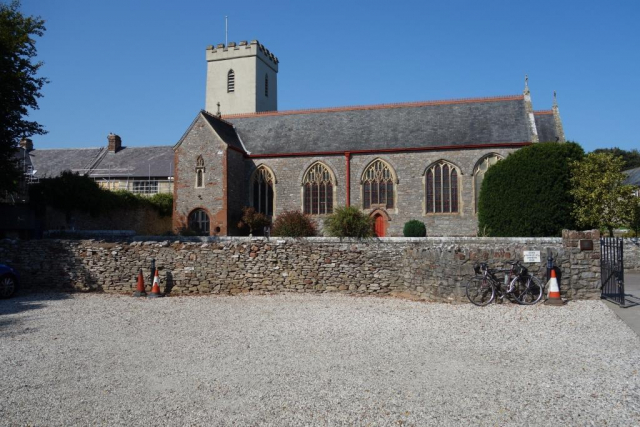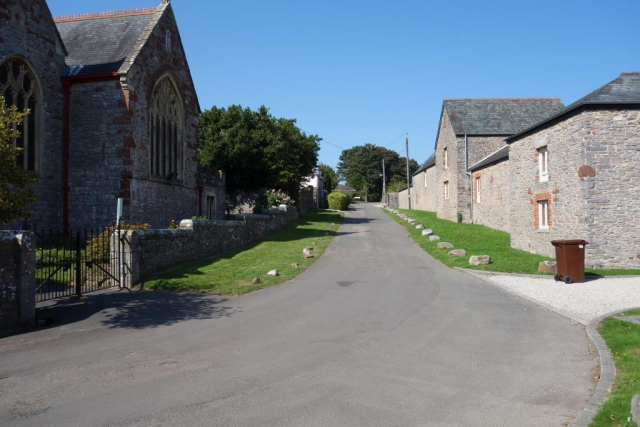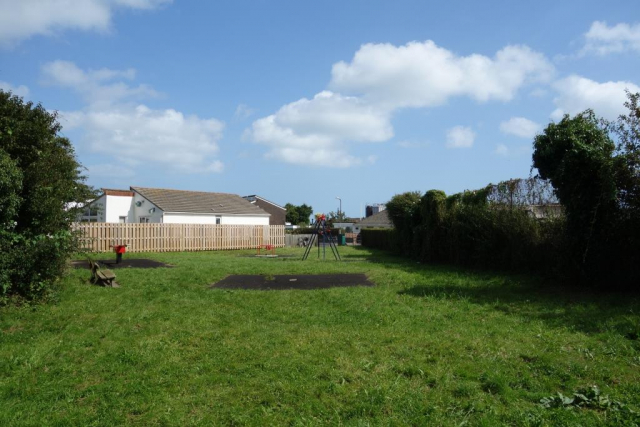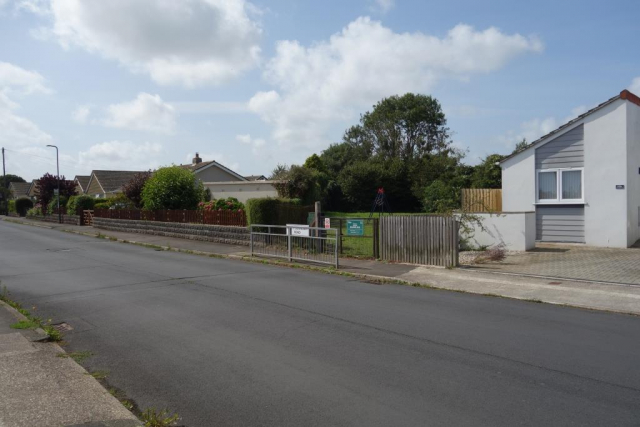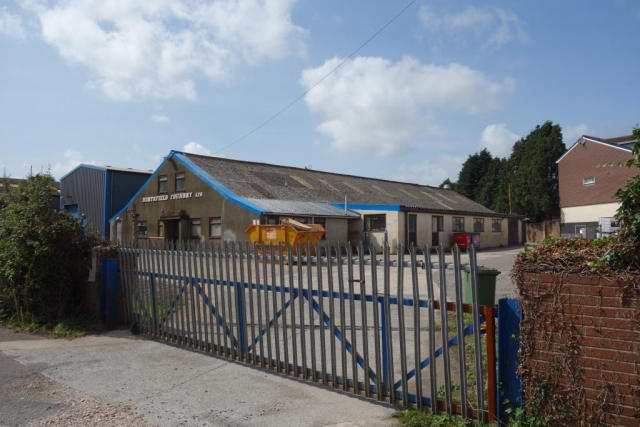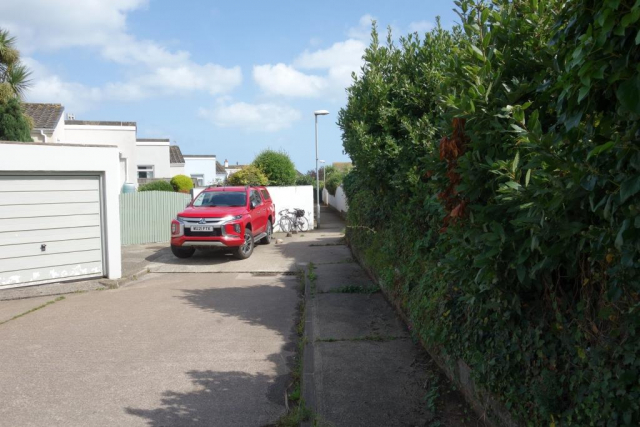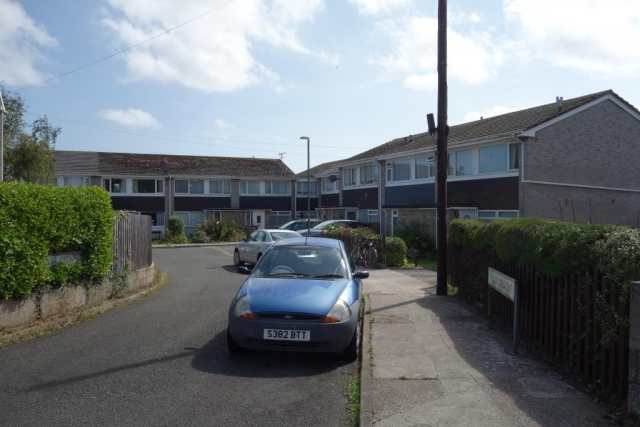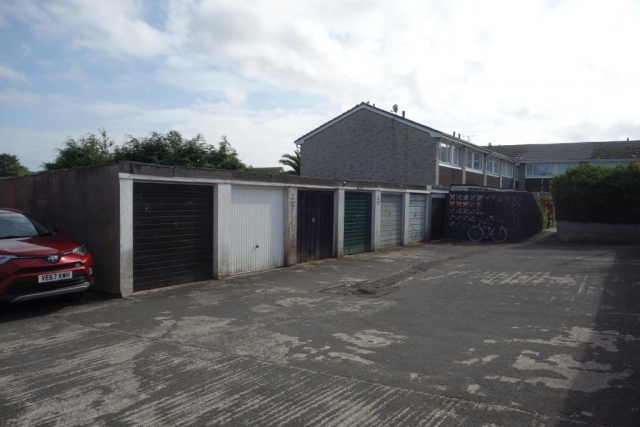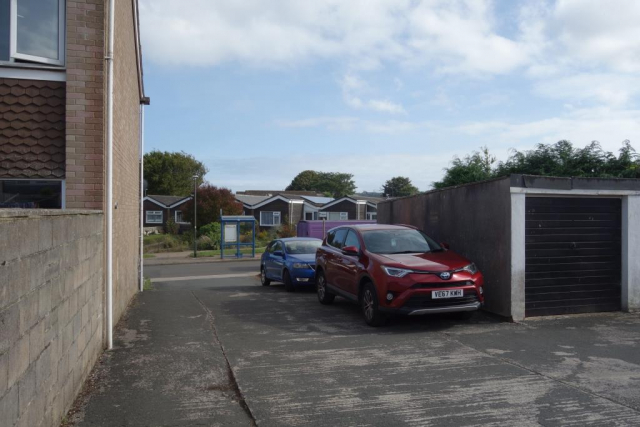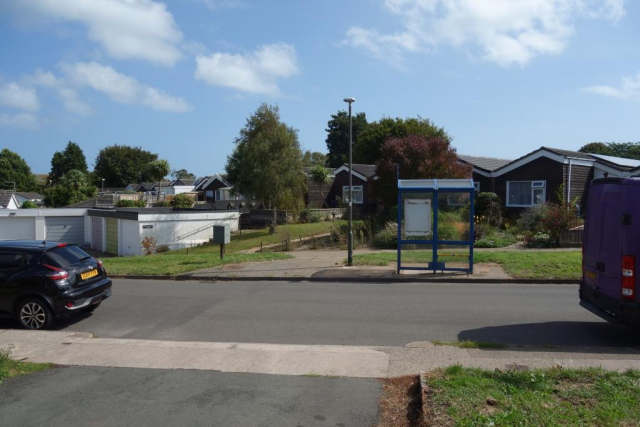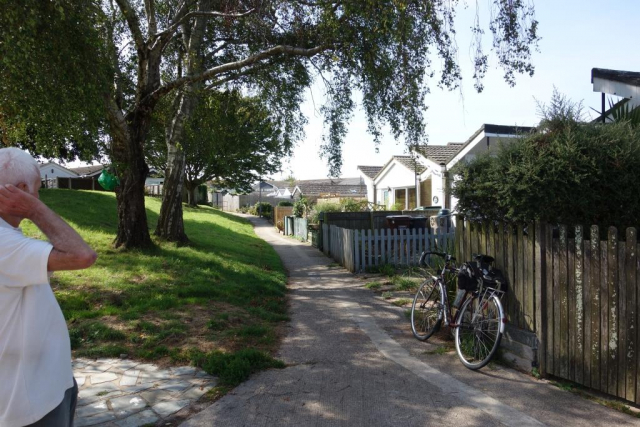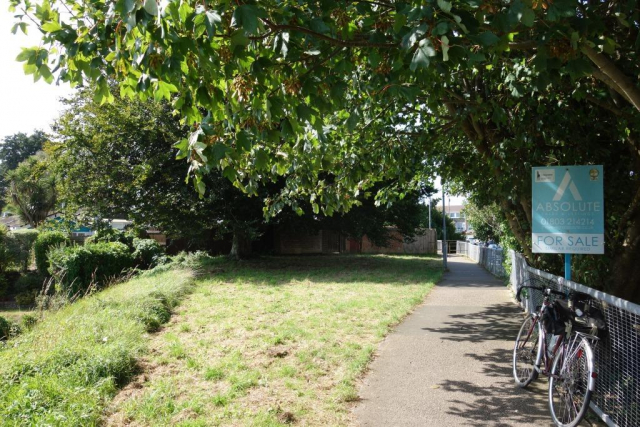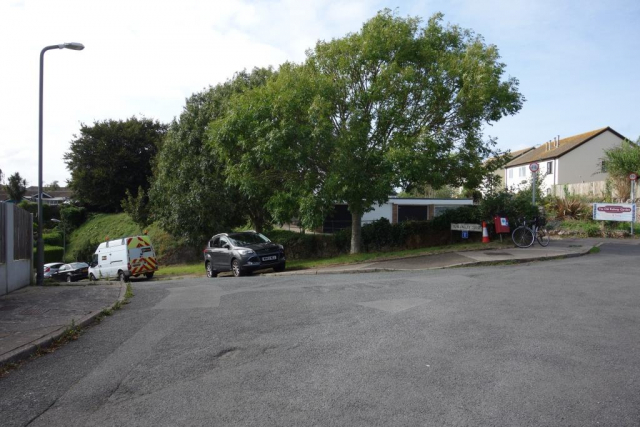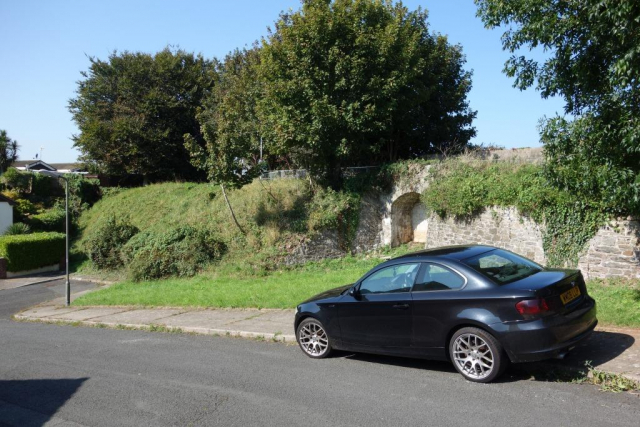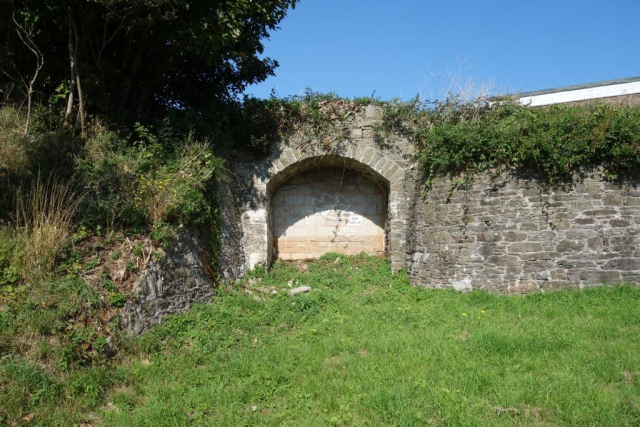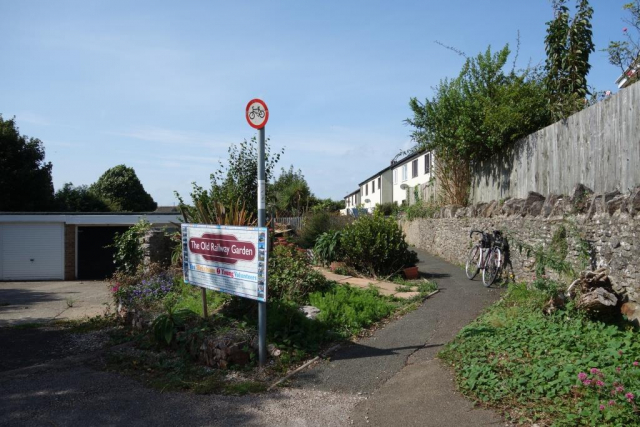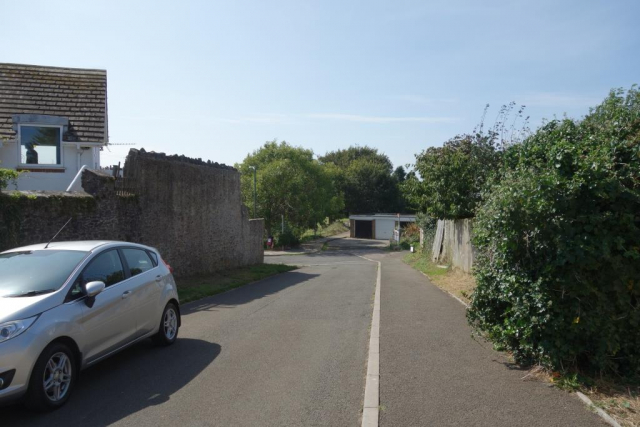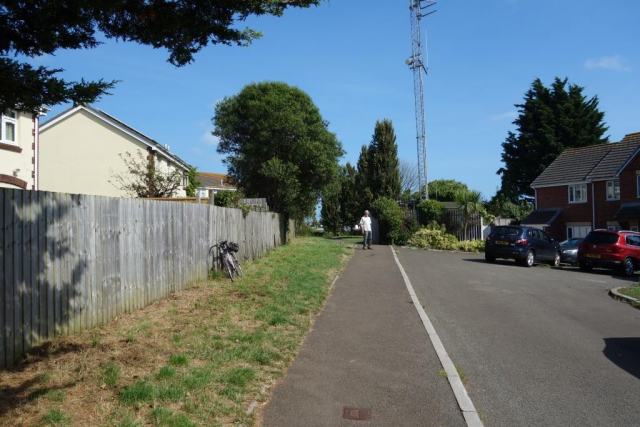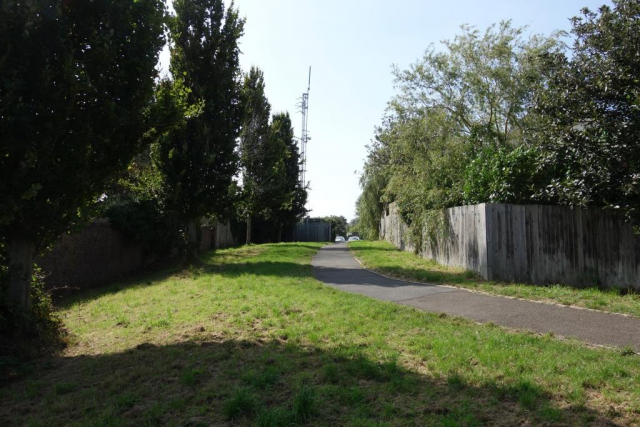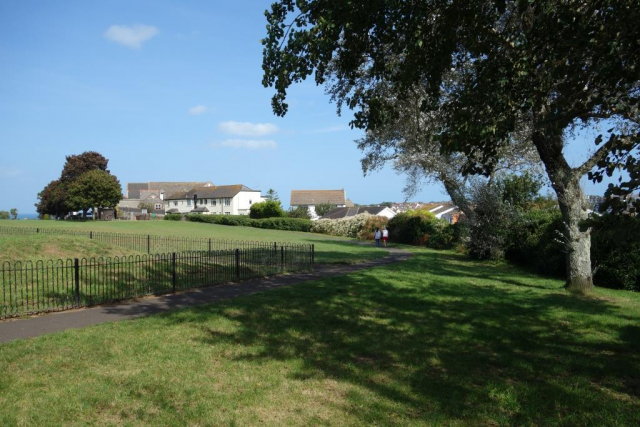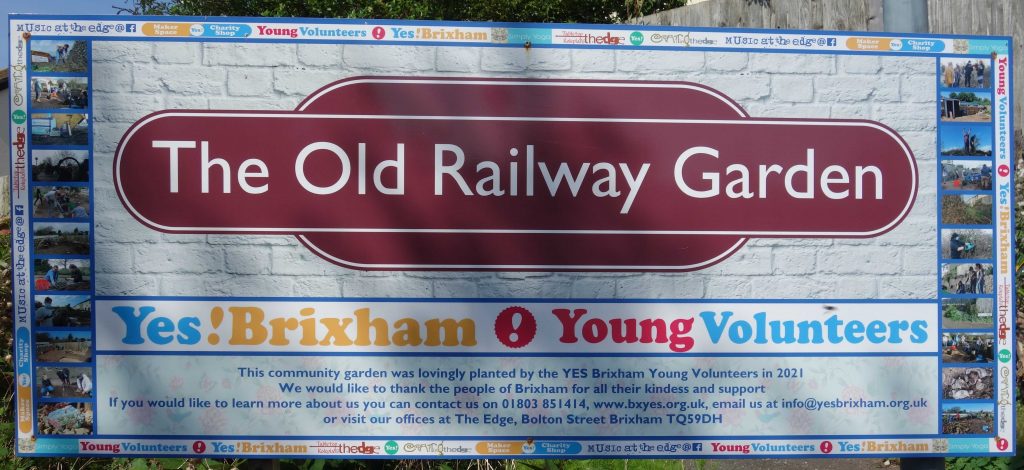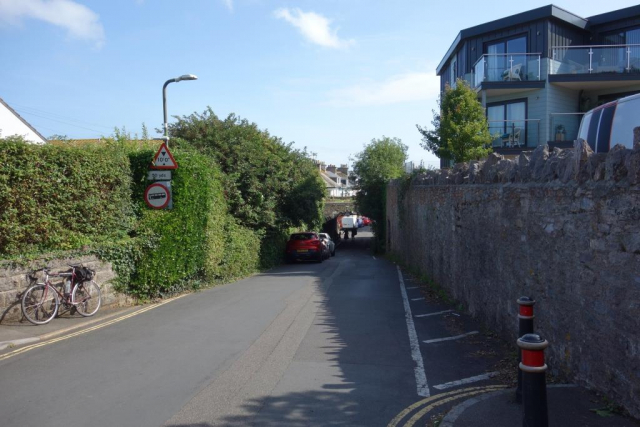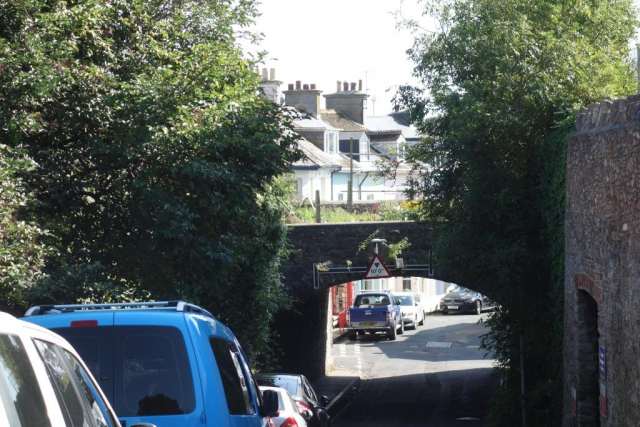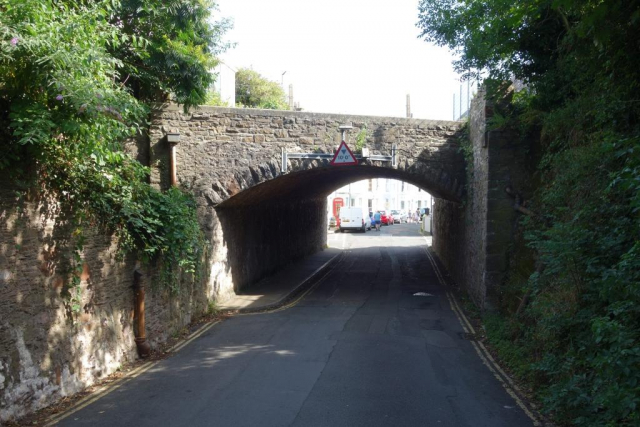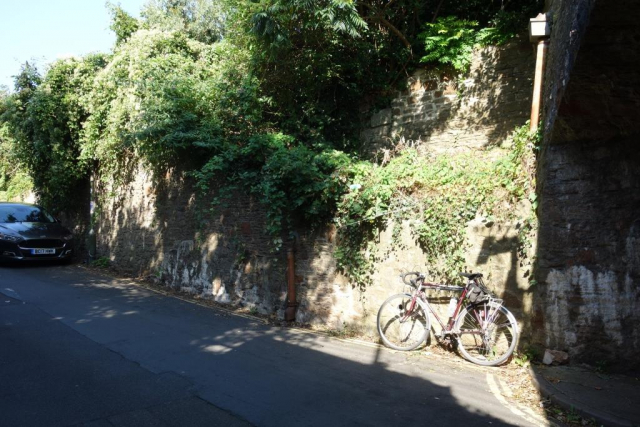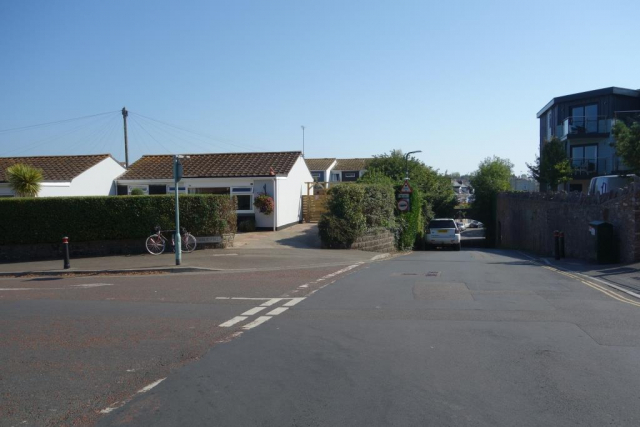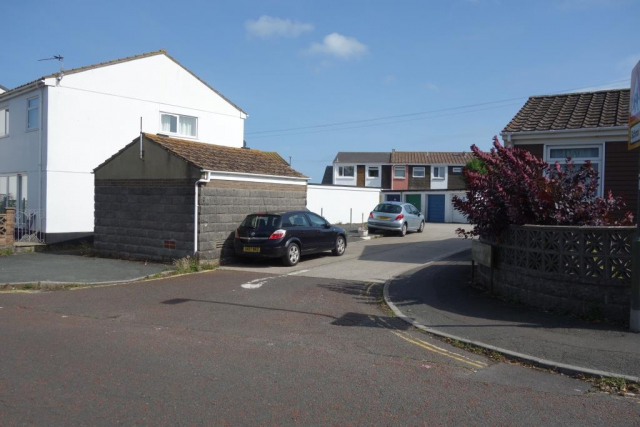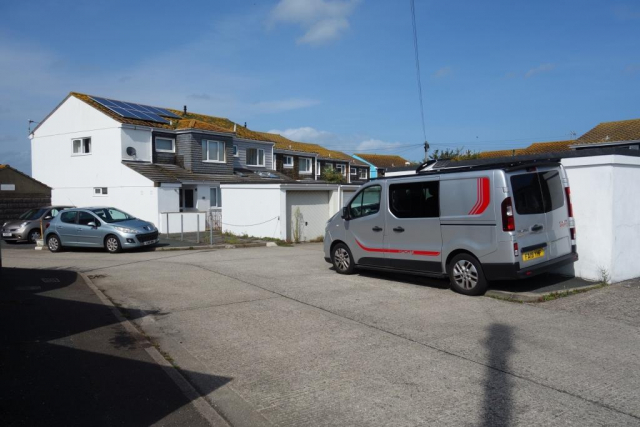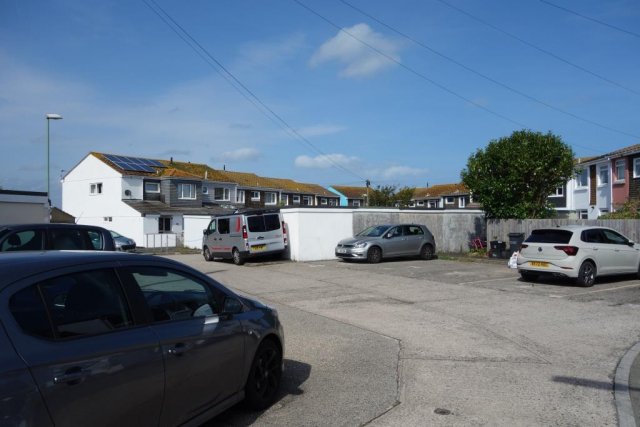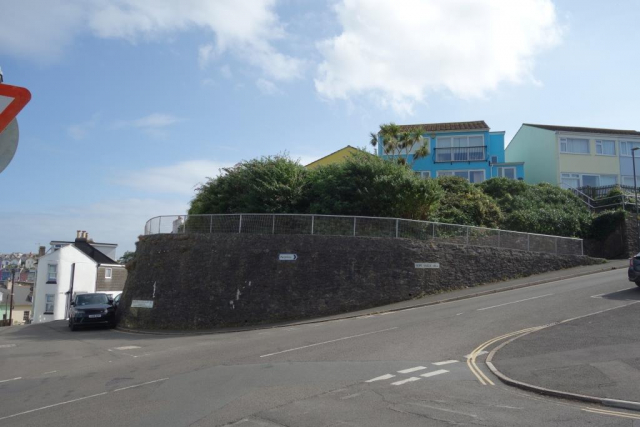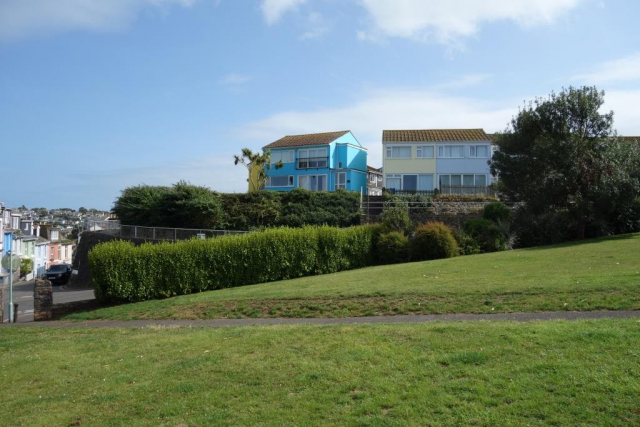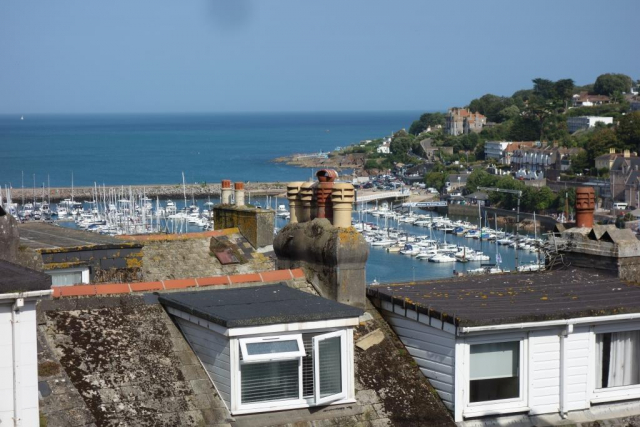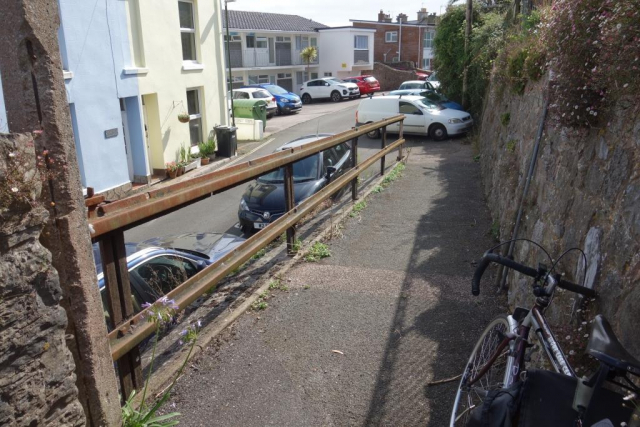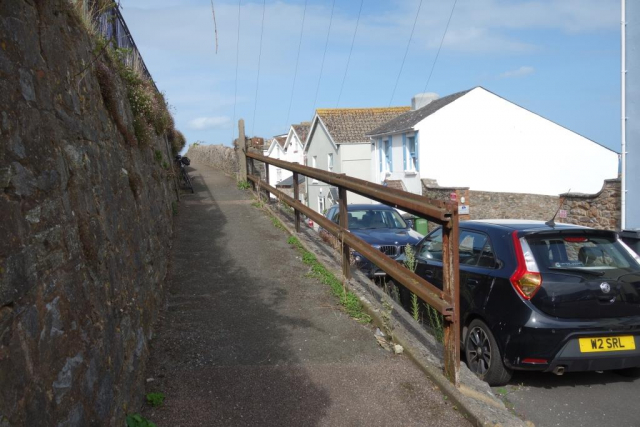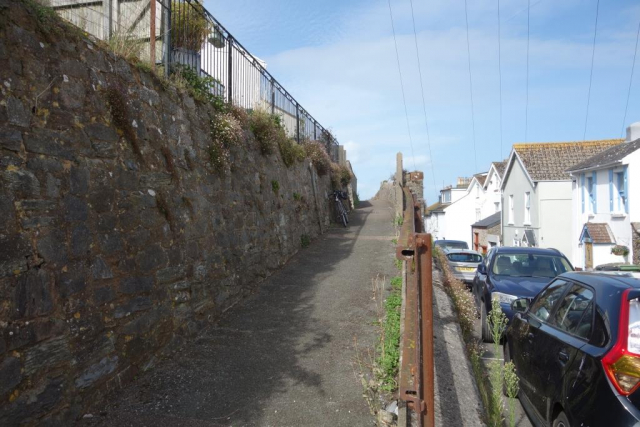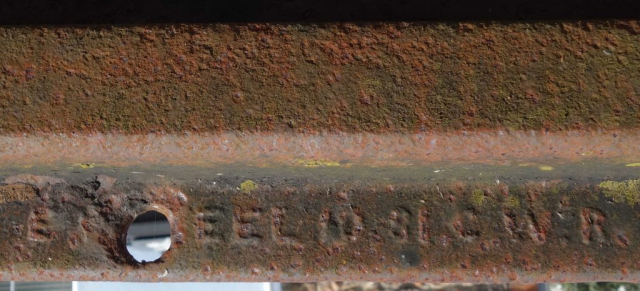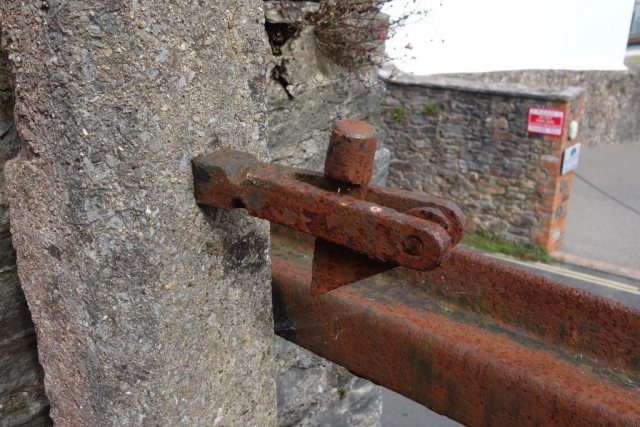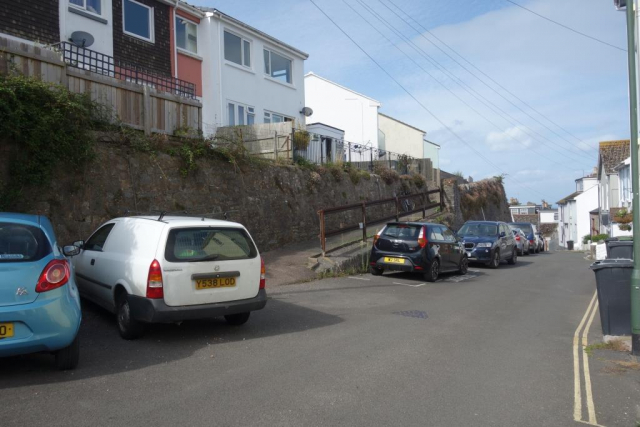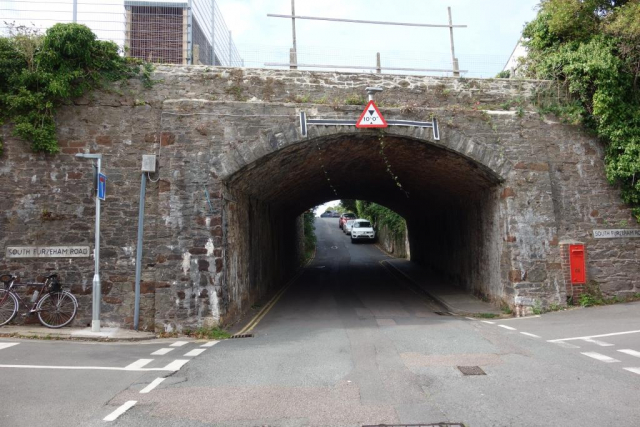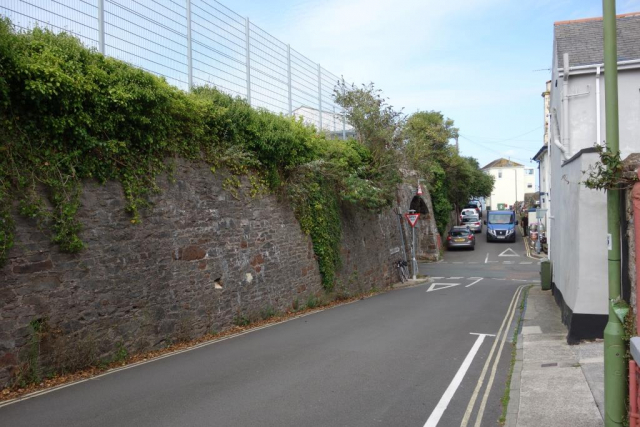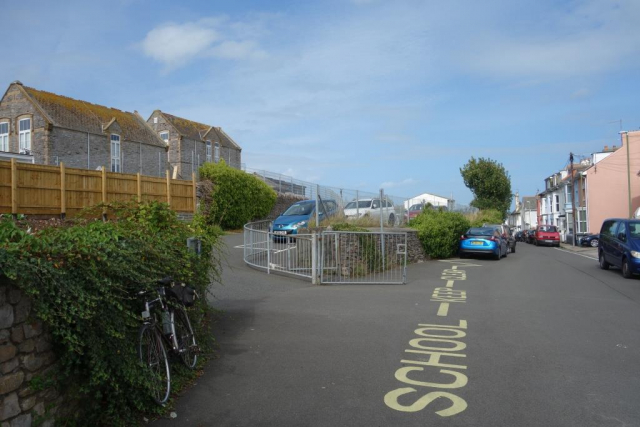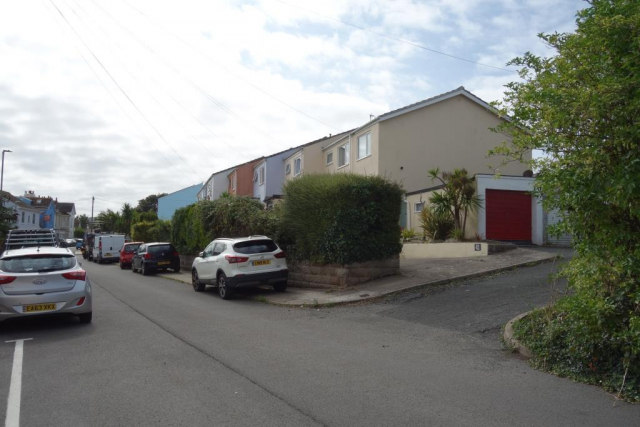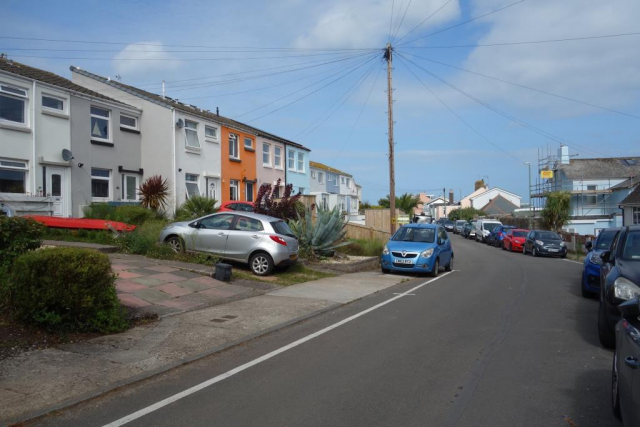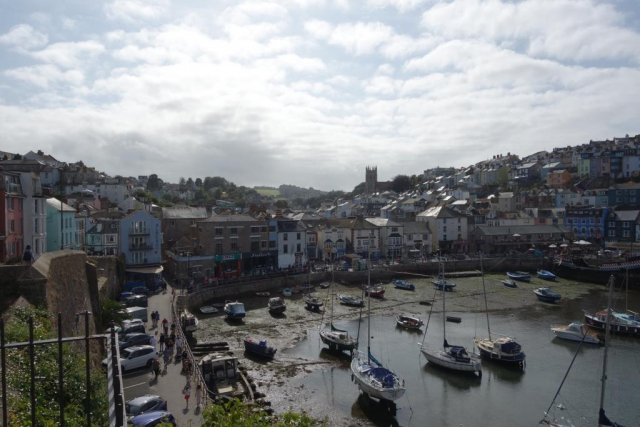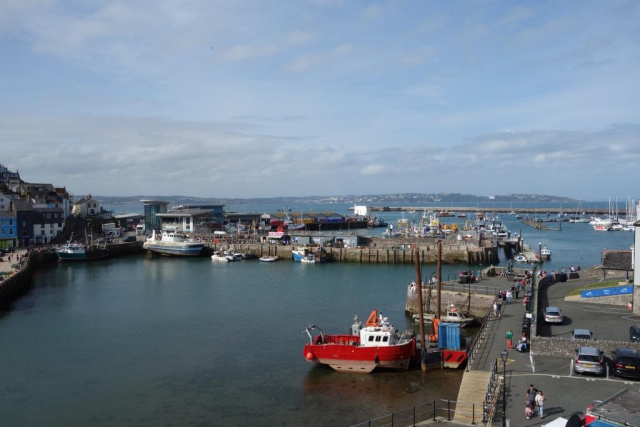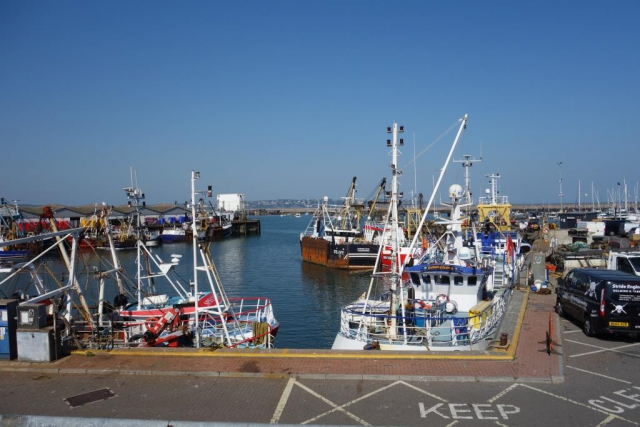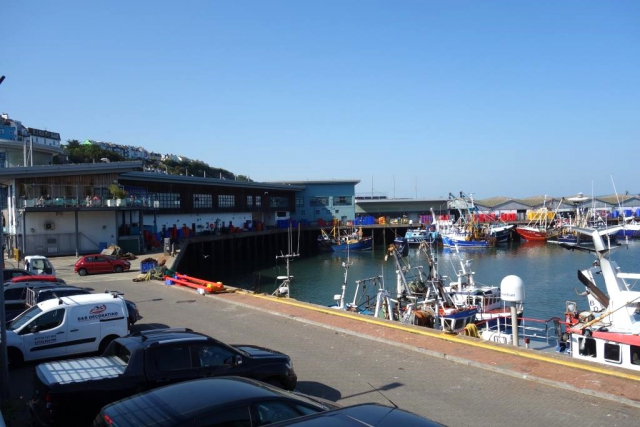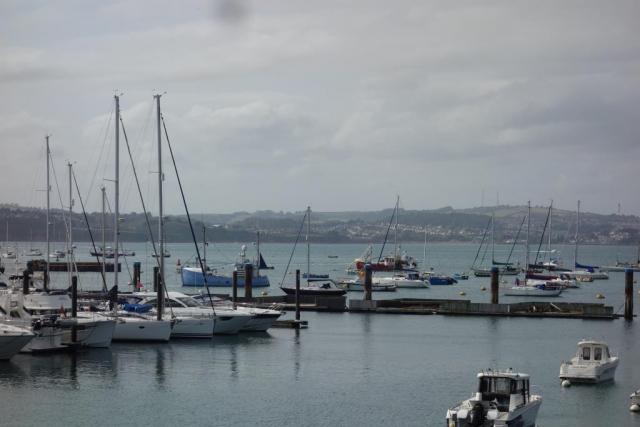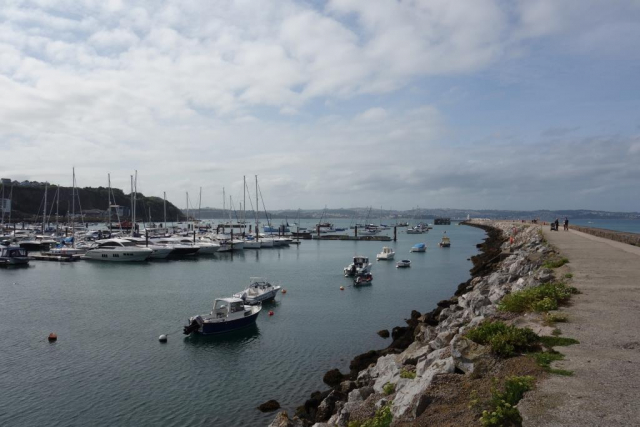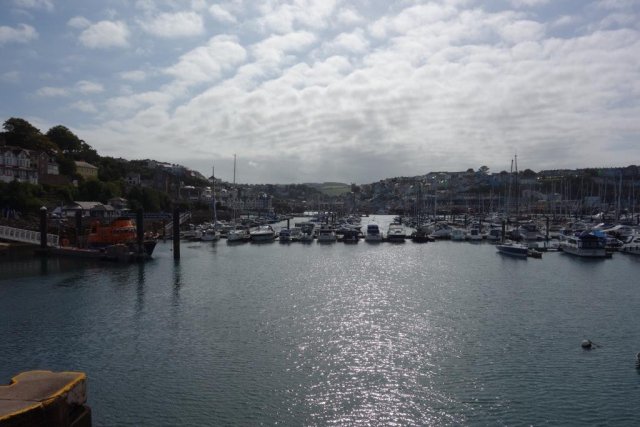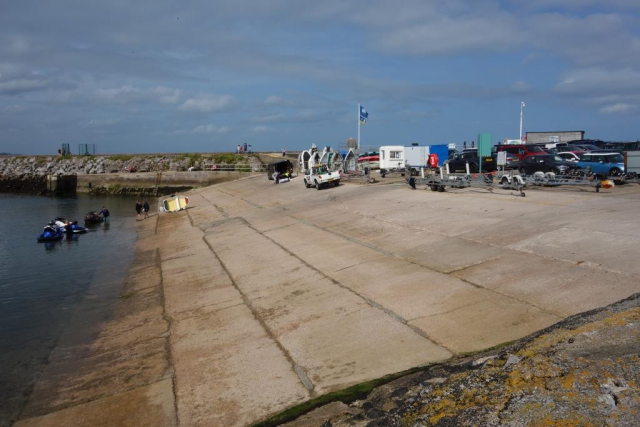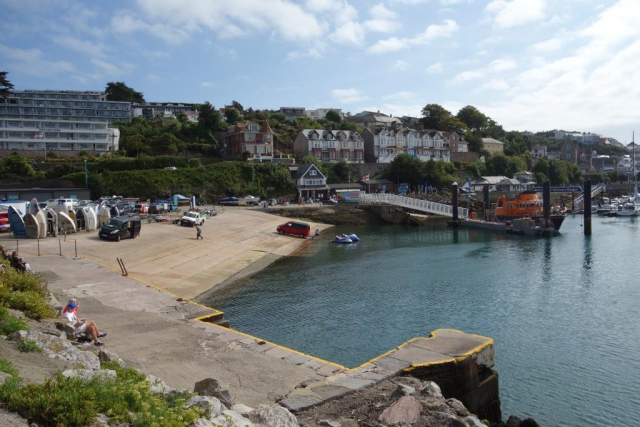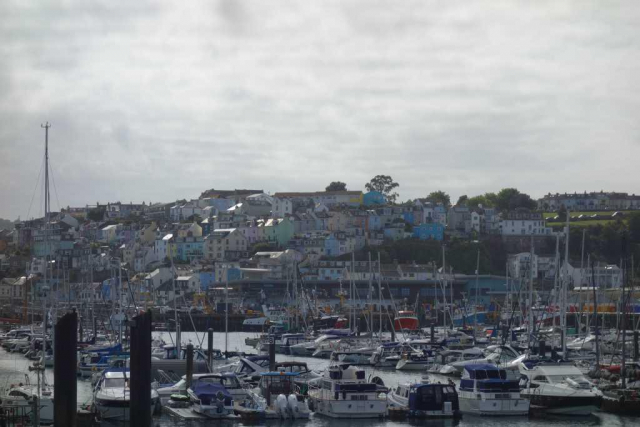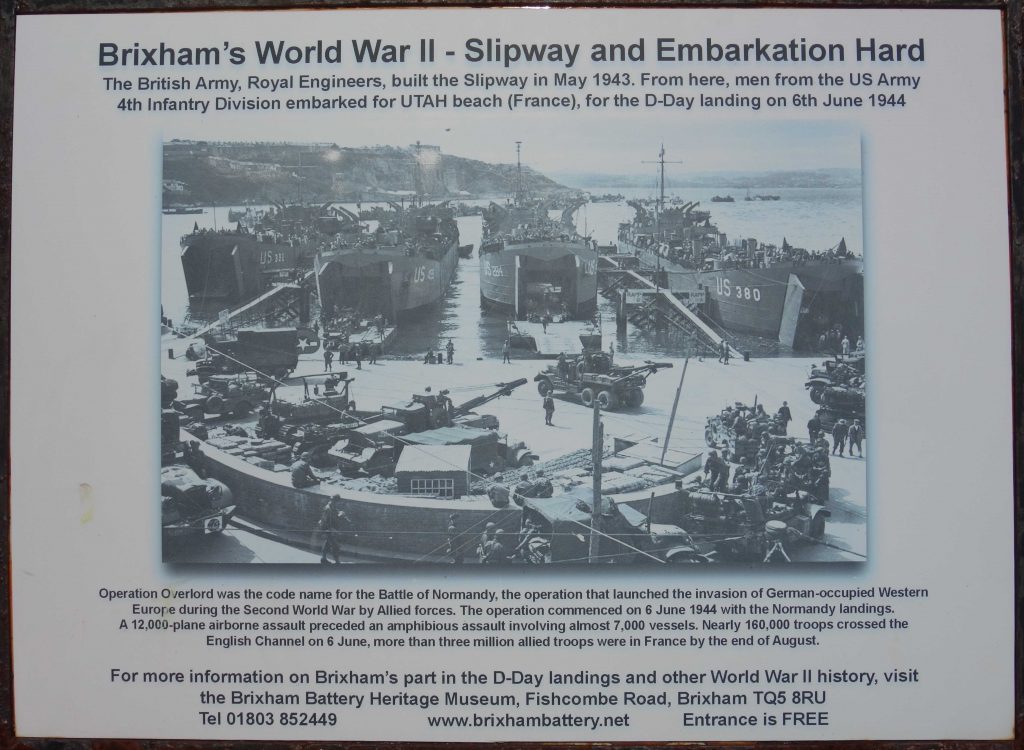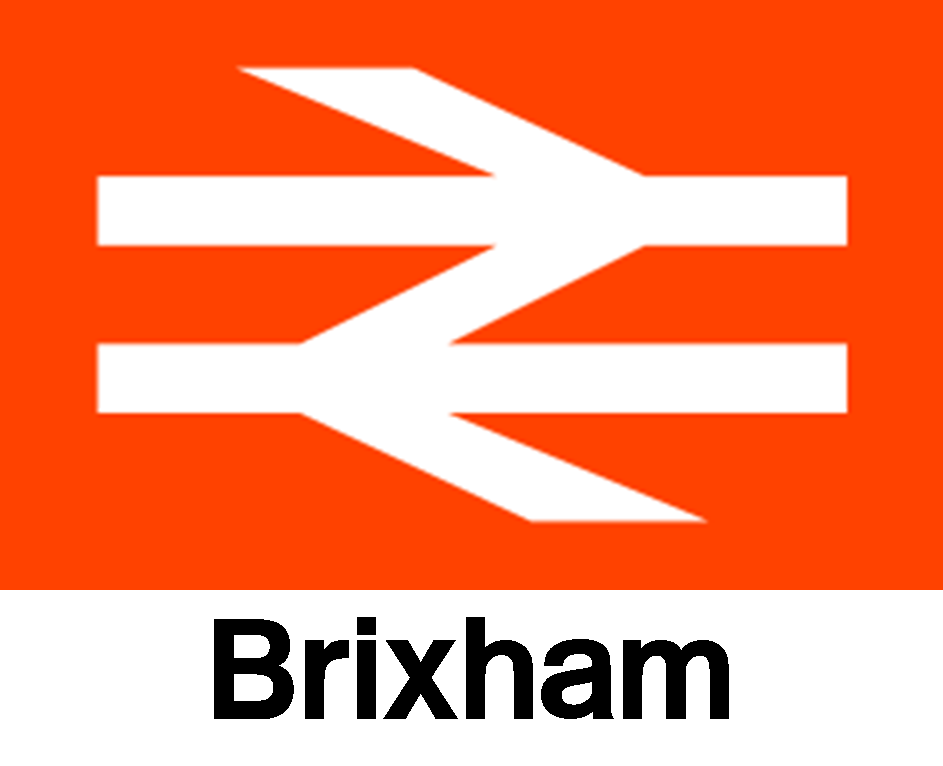The scout rode all two miles and six chains of this branch from a branch.
Churston
This is another example of the railway abbreviating its station name: the settlement is actually Churston Ferrers. The station could have been Galmpton, a closer and larger place.
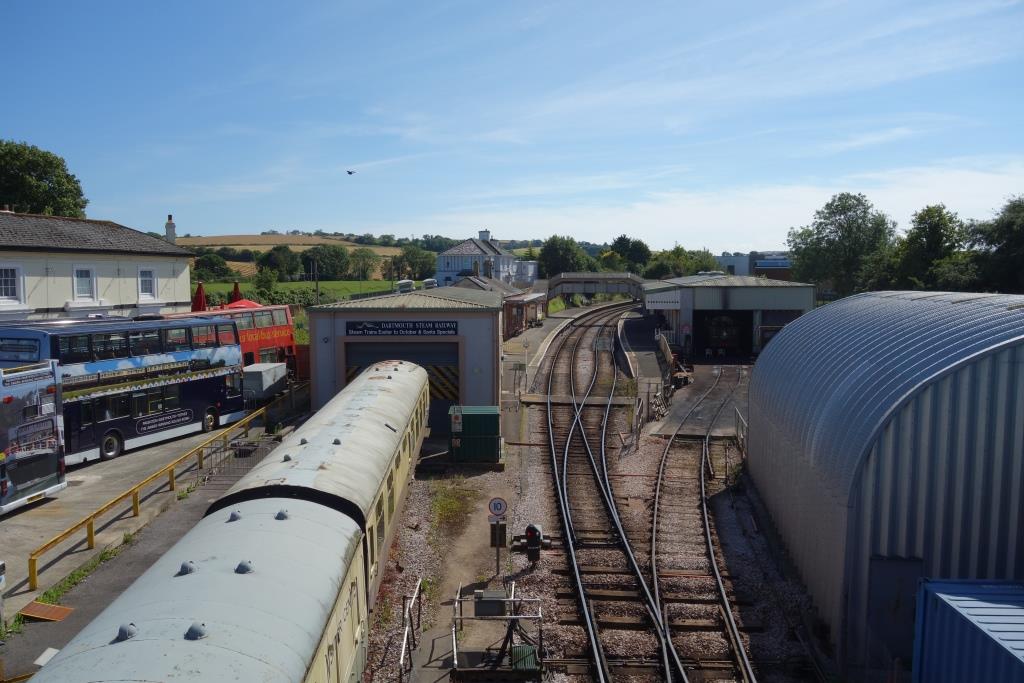
At left are the former Station Hotel and the yard where the circular tour buses are stored. The locomotive shop is at right.
The 1964 film, “The System,” opens with a “Roller” crossing the original station bridge, seen from the Brixham bay platform, and the occupants dashing for the Kingswear train
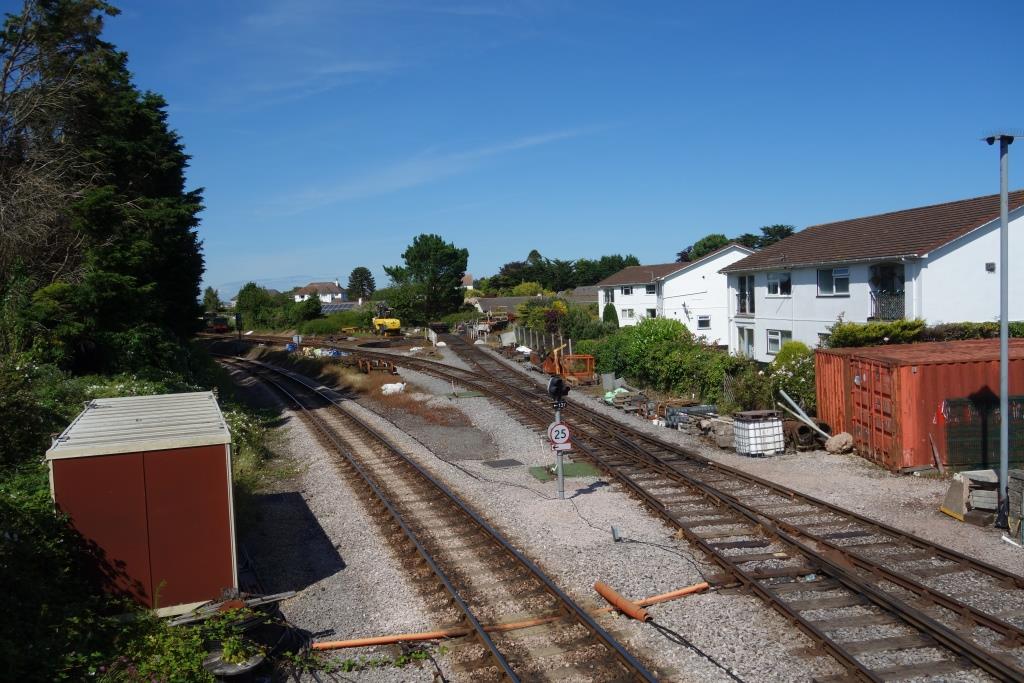
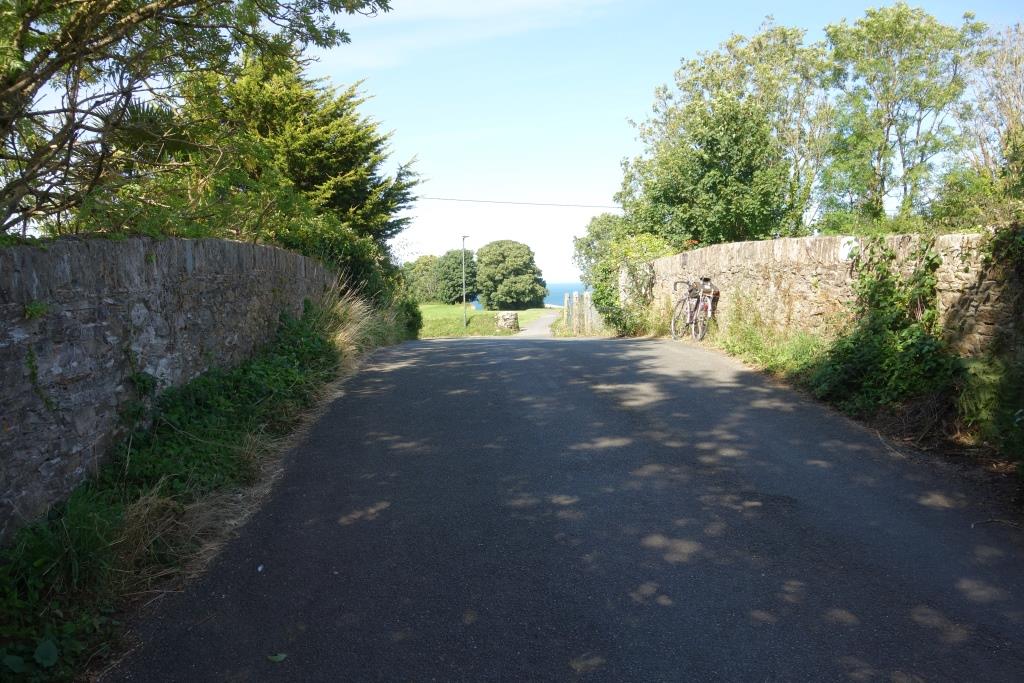
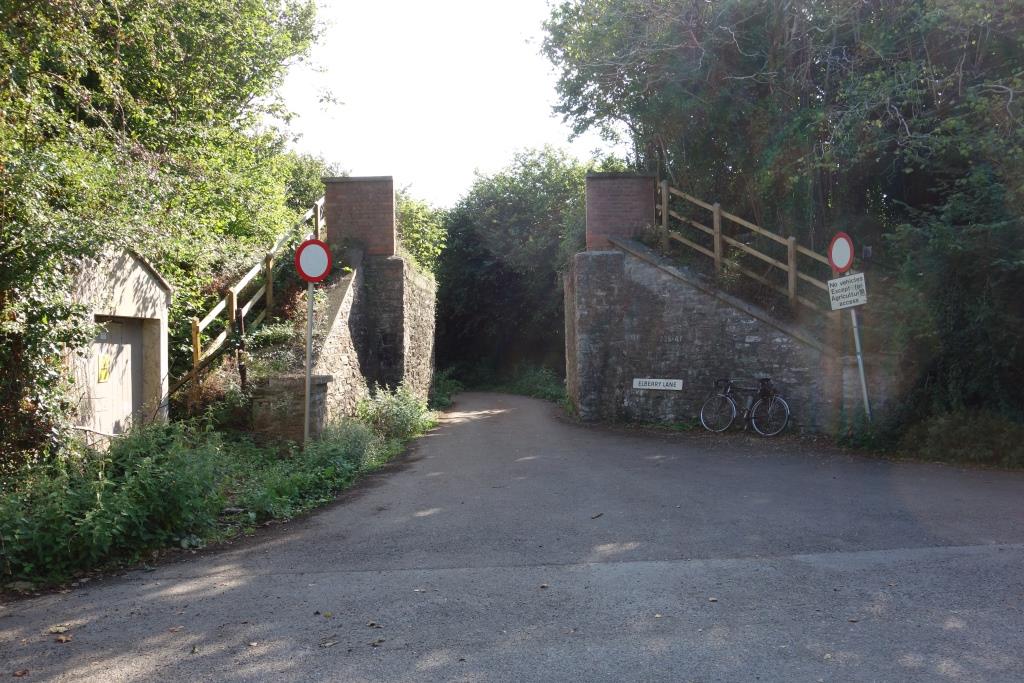
Bascombe Road, which crosses the Kingswear Branch, runs alongside the old line of railway for around 700 yards.
The steel spans have gone from Elberry Lane Bridge, above. This one and the next two were repaired and tidied up by National Highways in 2023. The two chaps sent to repair Station Bridge at Christow had been working on the Brixham Branch.
Churston Road passes beneath the line and joins Bascombe Road.
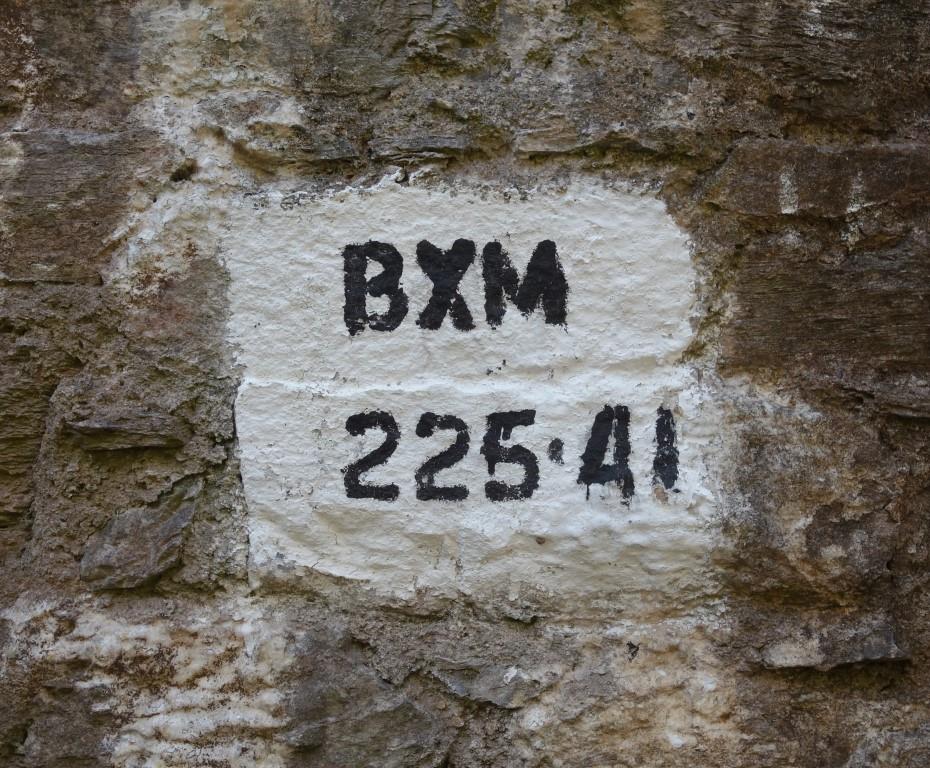
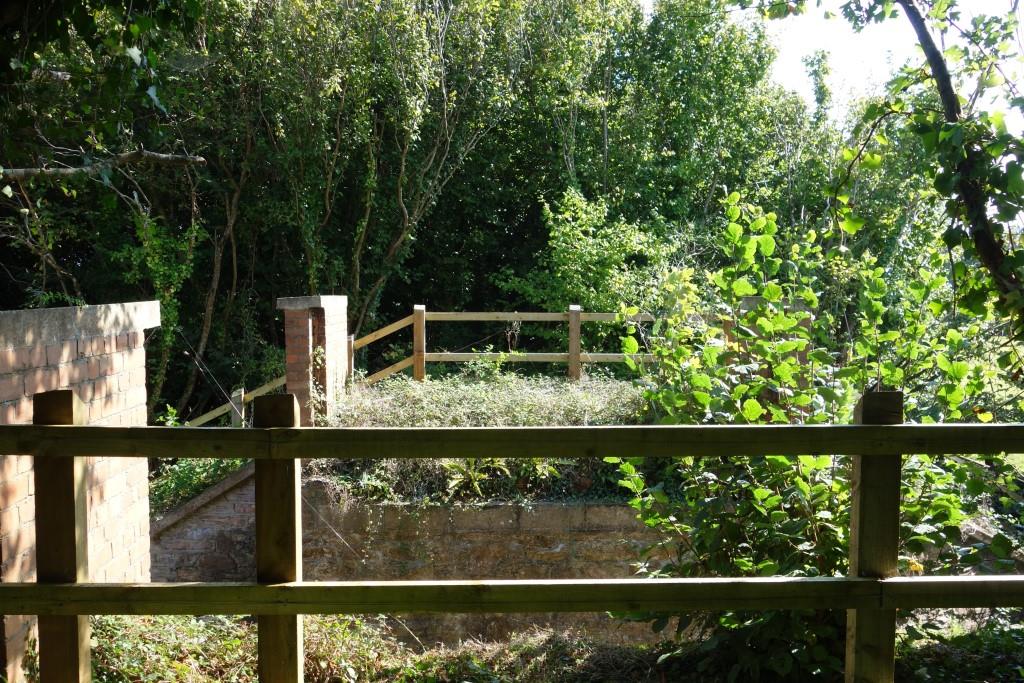
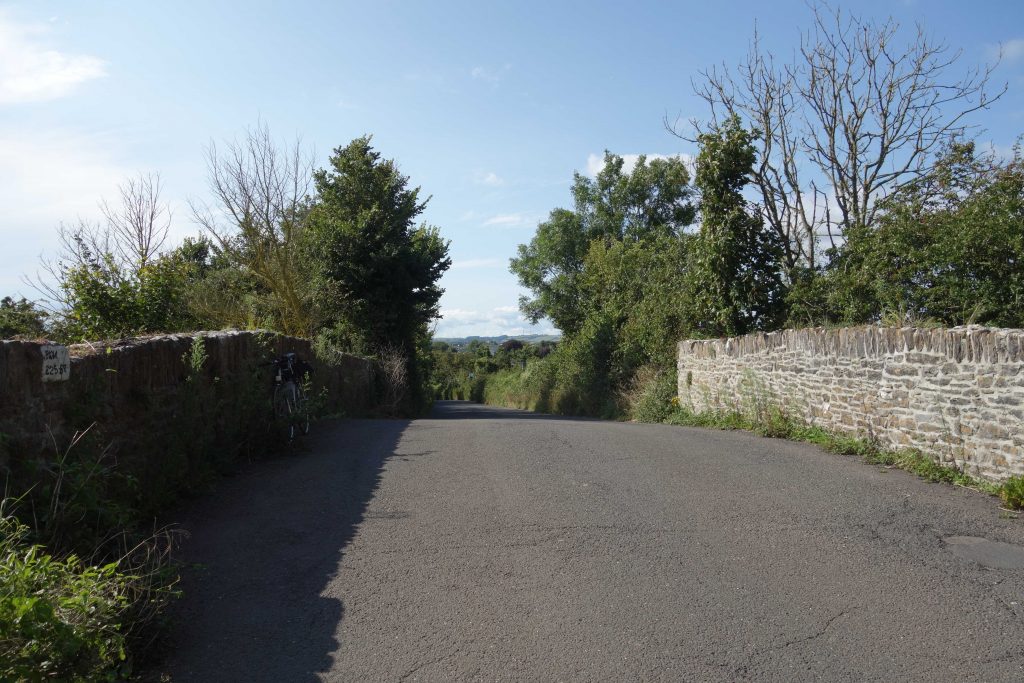
Ahead can be seen the rendered tower of St. Mary the Virgin with the masts of Beacon Hill in the distance. +
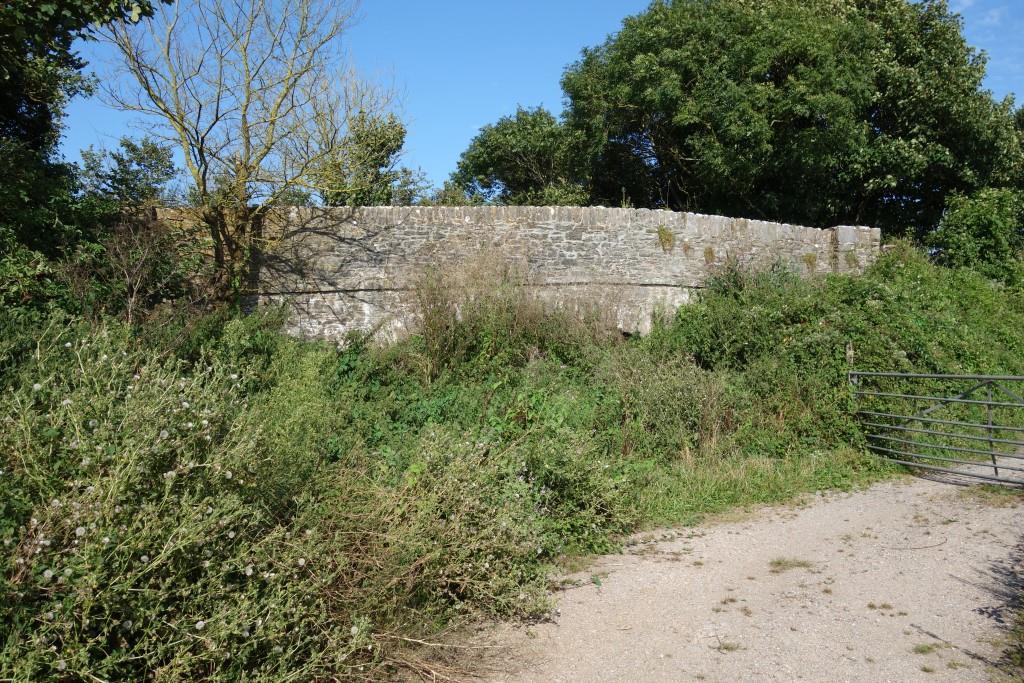
From Copythorne Road, there is a turning into North Boundary Road, which allowed housing development to fill Brixham Parish after the railway was closed. A little of a filled in rock cutting has been left as a playground.
The playground is within the former railway boundaries. One or both boundaries are easily discernible for much of the way to the old station.
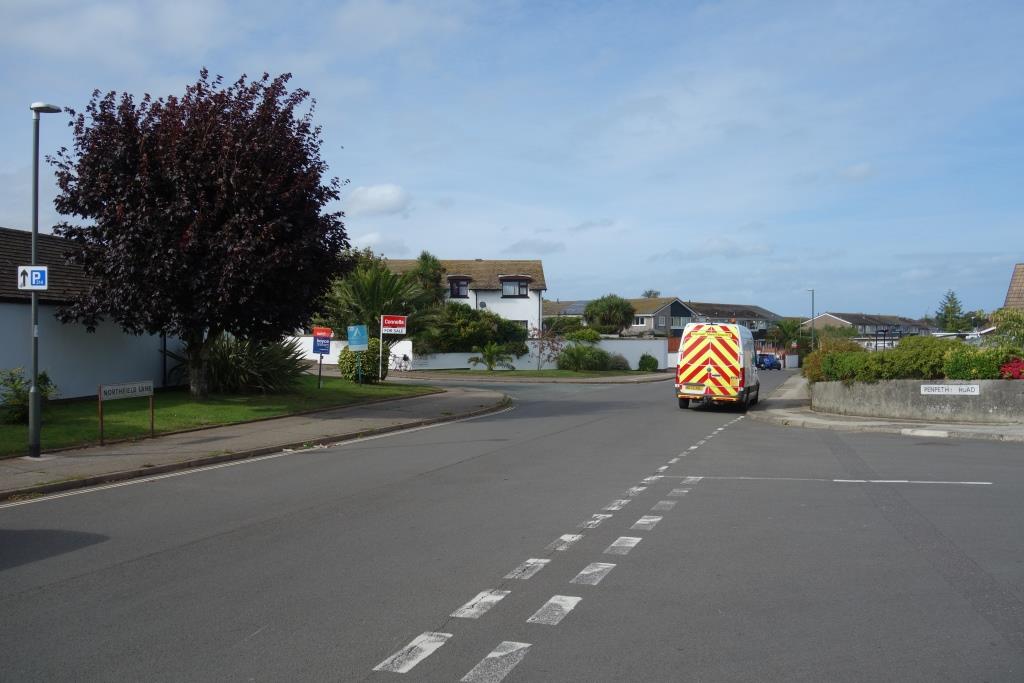
On the footpath which runs to the south of the bungalows built on the course of the line from Northfield Lane, the scout met the very engaging John, who said that he’d been a keen cyclist, riding with the Mid Devon Cycling Club. He had lost his peripheral vision, affecting his sense of balance, and could no longer ride. He lived in one of the bungalows which he inherited from his Mother. They were built in 1967, only four years after the line was closed.
He remembered “The Whippet” (the nickname for the branch train) well and was easily distracted by it when he was a pupil at Furzeham School, some of whose classrooms overlooked the station. He told the scout that he had been a fisherman and had later done a fish round. The scout recalled Dave Hart, another fisherman who latterly did a round which included Christow on a Friday. He was sad to hear from John that Dave had died only a fortnight before.
John talked of the Belgian fishing fleet that escaped to Brixham during the war and the continuing success of the port, including how much fish leaves by lorry destined for markets abroad. He had exported cuttlefish to Japan. He was sad that retired fisherman do not gather socially as they once did.
Skirting the green, the scout reached the old station.
Brixham
The Brixham Railway Heritage Trail is a very active project partly aiming to make more of the former line accessible to walkers. It has erected this commemorative board opposite the station entrance at the top of Ropewalk Hill.
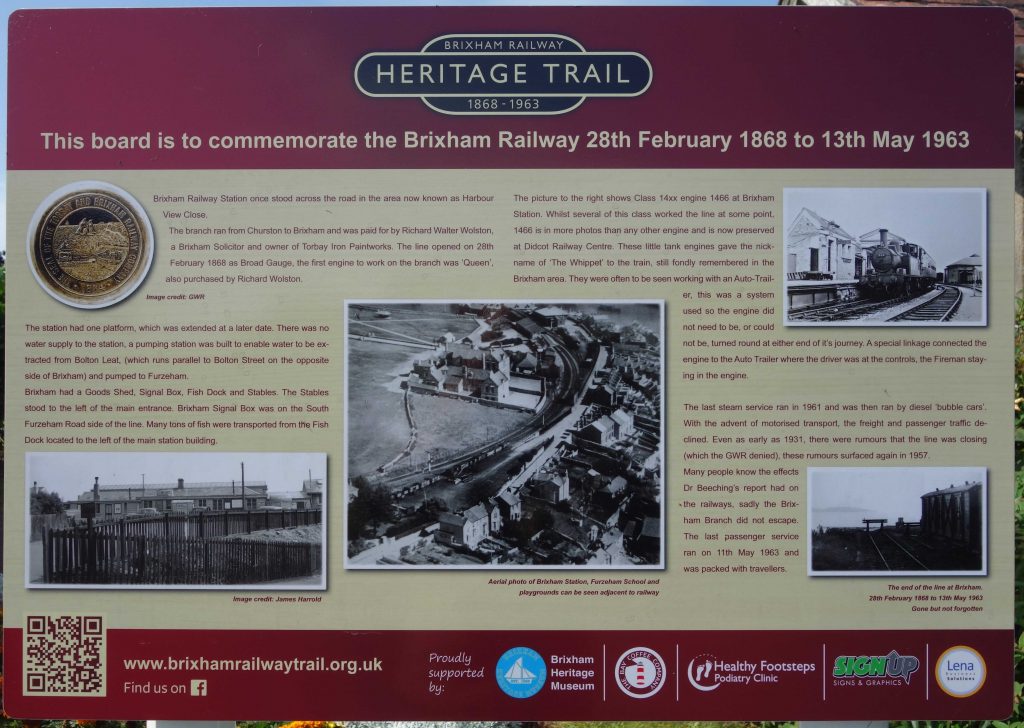
The project’s Mughook pages contain a splendid collection of photographs and much information.
In director Michael Winner’s “The System,” the closed Brixham Station became “Roxham,” a fictional seaside resort where a team of lads systematically prey upon young female holidaymakers. Just after the credits, a train of corridor Mark Is, hauled by a “63” diesel, arrives at the station and a passenger in first class catches the eye of photographer “Tinker,” played by Oliver Reed. Cue the action, with long scenes on the platform and at the frontage of the station. The film is well worth watching as a period piece, with scenes shot around Torbay, and in Dawlish, Dartmouth and Hallsands.
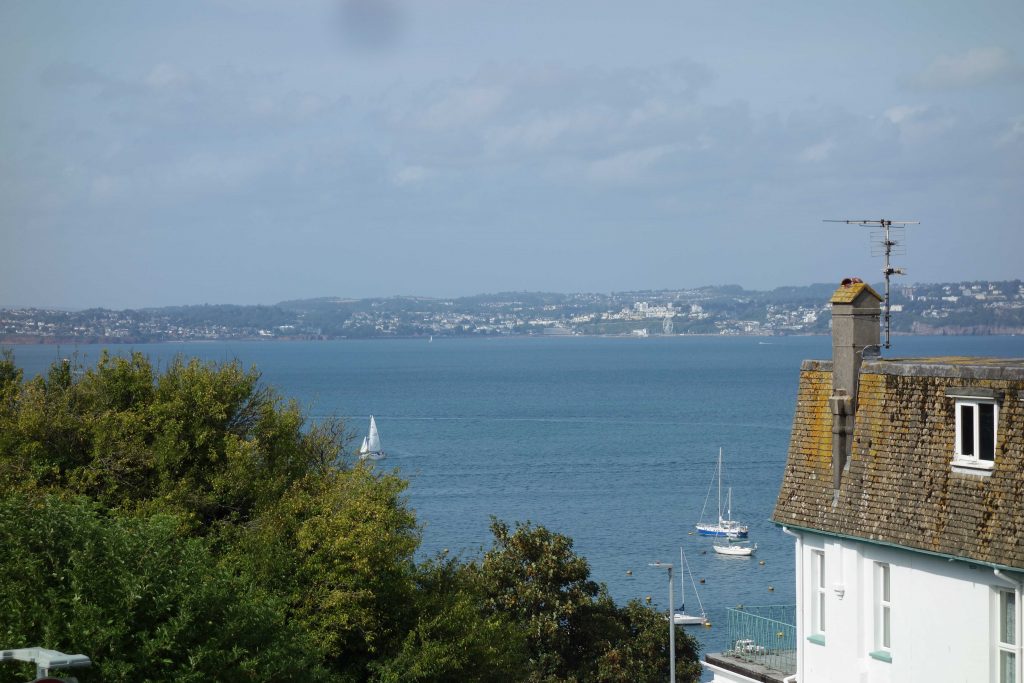
The bay from Livermead, at left, to London Bridge Arch is visible. +
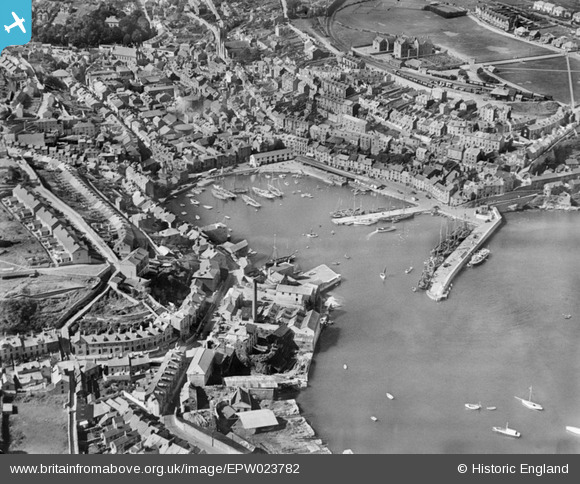

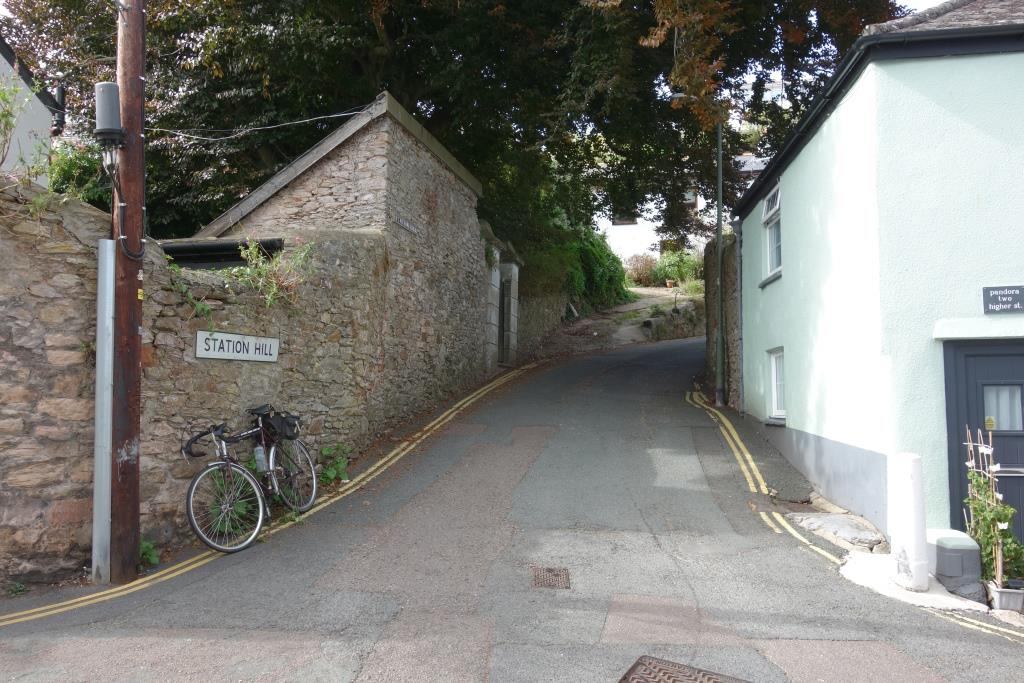
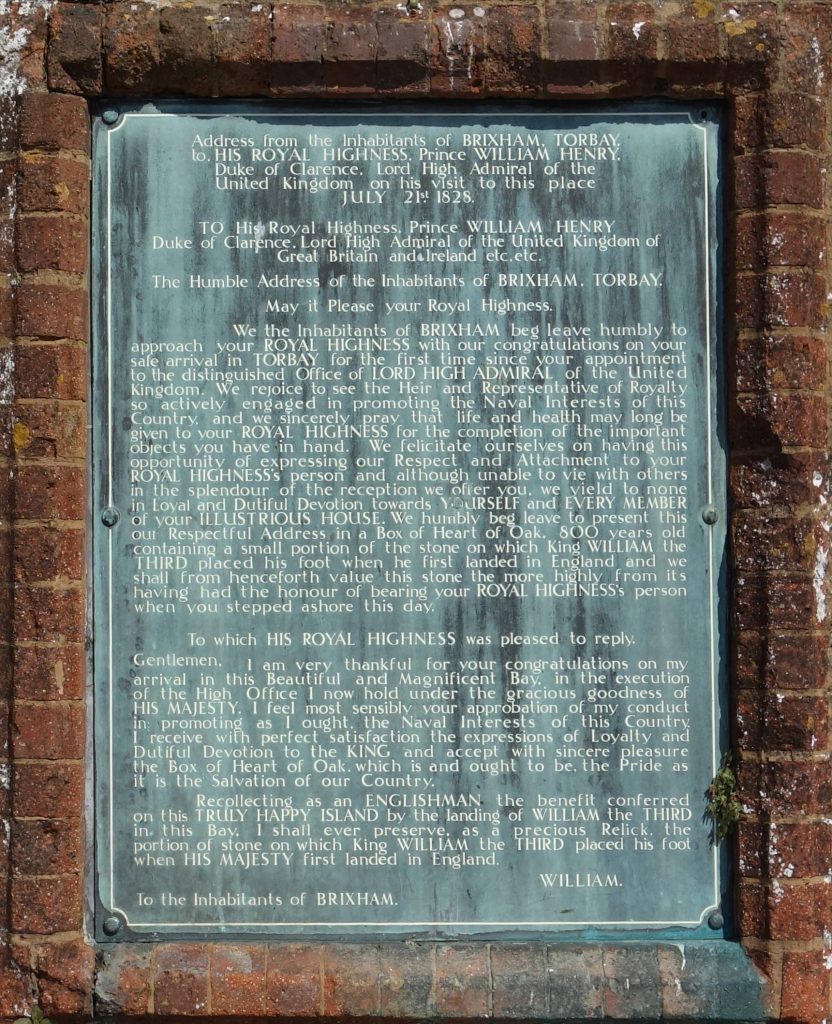
Is this a “TRULY HAPPY ISLAND” now? +
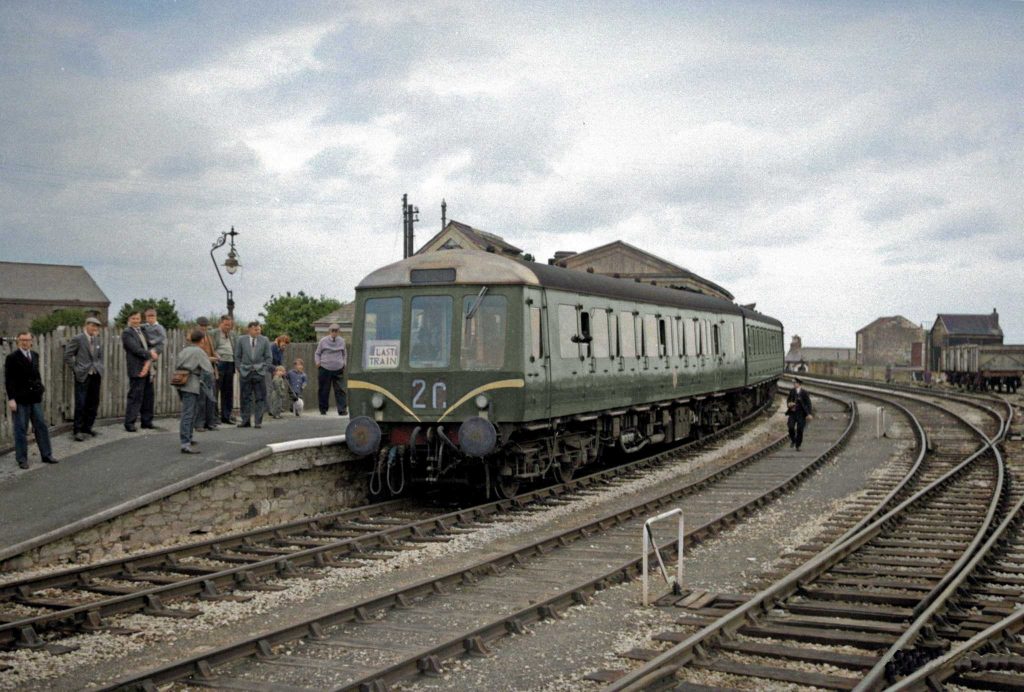
From a monochrome negative acquired by Bernard Mills and coloured by Richard Hoskin.
Copyright: Bernard Mills.
The railway wrote to Brixham Railway Heritage Trail, asking if the group would like a totem, like the ones made for Bideford, Bude, Ilfracombe and Tavistock.
Bernard Mills again provided a photograph of a diesel train—the last, unfortunately—for the reverse.
A member of the group replied, showing some enthusiasm, but later gratefully declined.
It should be understood that the group is not campaigning for reinstatement of the railway.

